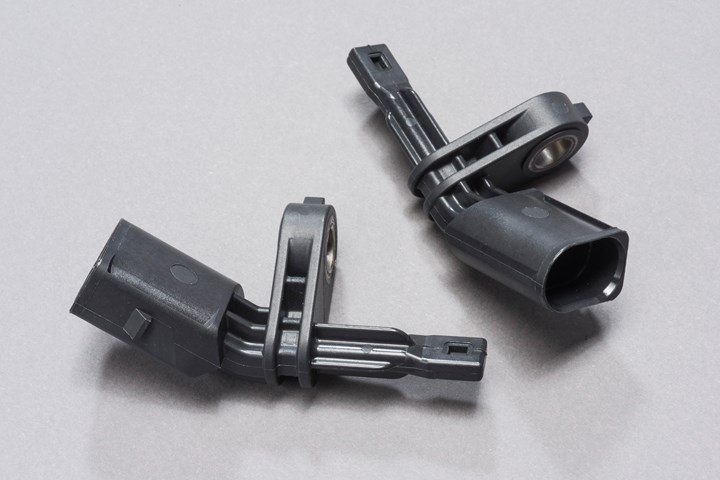PBT for Sensitive Automotive Electronics in Extremely Challenging Environments
BASF’s Ultradur B4335G3 HR HSP boasts a unique combination of different properties such as outstanding hydrolysis resistance and good flowability

A PBT recently launched by BASF boasts a unique combination of different properties such as outstanding hydrolysis resistance and good flowability, setting apart from other PBTs. Ultradur B4335G3 HR HSP has been developed to protect sensitive automotive electronic components from extremely challenging environments.
In automotive electronics, many small components are of great importance. Delicate wheel speed sensors, for example, play a crucial role in the safe functioning of a vehicle. They detect the wheels’ number of revolutions and pass on the information to the ABS and ESP. This is critical in driving situations such as an emergency break as it enables the systems to take preemptive actions to maintain vehicle stability and steering ability. Because they are positioned next to the wheels, the sensors are exposed to extreme climatic conditions and media such as splash water and salt.
The new PBT is formulated with highly effective additives that are said to greatly delay hydrolytic degradation. This makes the material resistant to damage by water at elevated temperatures. At the same time, the standard low moisture absorption of 0.2% is retained, which gives the PBT excellent electrical insulation properties and good dimensional stability. It is also resistant to stress cracking caused by alkaline media. This makes the component more durable and reliable, which increases the safety standard. Characterized as a high-speed product (HSP), this material is said to reduce the melt viscosity, which enables the production of thin-walled components.
Related Content
-
Prices of All Five Commodity Plastics On the Way Up
Despite earlier anticipated rollover in prices for most of the volume commodity resins, prices were generally on the way up for all going into the third month of first quarter.
-
Polymer Showdown — PC/ABS vs. PC/PBT — May the Best Material Win
First in a series, experts from plastics engineering consultancy The Madison Group will pit leading thermoplastics against each other to see how they differ in processing characteristics, chemical resistance, thermal and mechanical performance, and more.
-
Polymer Science for Those Who Work With Plastics: Why Entanglements — Not Just Molecular Weight — Drive Plastic Performance
Ever try running your fingers through tangled hair? Yeah … that’s not fun, but that’s what happens at the molecular level when polymer chains reach the right length. They wrap around each other, intertwine and … get stuck — and those tangles are the real reason plastics perform the way they do.



